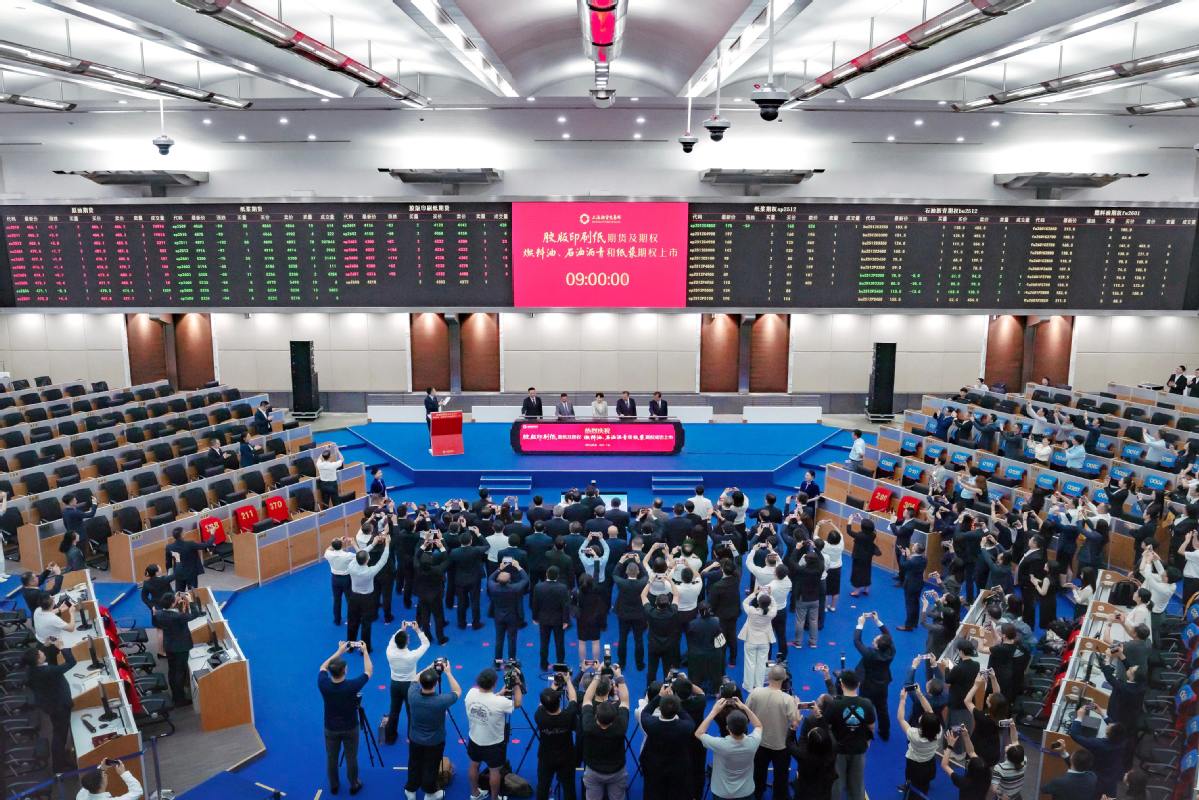SHFE intensifies efforts to broaden product portfolio


The Shanghai Futures Exchange has marked yet another major step forward in internationalization.
It has from Sept 10 started listing offset paper futures and options, the first such financial derivatives for the cultural paper industry.
Apart from helping companies in the cultural paper industrial chain better manage risks, the newly introduced financial tools will help shape a China pricing benchmark, attracting participation from global investors, said Xu Xiangnan, deputy Party secretary of the China National Light Industry Council.
According to Huang Dongdong, general manager of the pulp and paper business department at Xiamen ITG Group, China is the world's largest producer and consumer of cultural paper. The launch of offset paper futures and options can help build an objective pricing system, providing important benchmarks for domestic and international trade, he said.
The SHFE also listed on Sept 10 options for fuel oil, bitumen and wood pulp. Together with the bitumen futures that started trading on the SHFE in 2013, these four products were included in the qualified foreign investors program the same day, providing access to international investors.
These are part of SHFE's continued efforts to complete its product portfolio and advance the high-level opening-up of the Chinese futures market, said SHFE Chairman Tian Xiangyang.
Two months before the introduction of the new products, SHFE released the international version of its business rules. Amendments have been made regarding rules on market entry, transactions, settlement, risk control and delivery.
According to SHFE officials, such preparation is crucial for opening new futures and options contracts to overseas special participants, intermediaries and clients in the future.
In July, SHFE and its subsidiary Shanghai International Energy Exchange, or INE, were officially approved for inclusion on Malaysia's list of Specified Exchanges. Malaysian investors are now able to trade futures products in the Chinese market more conveniently through their local brokerages.
Malaysia marks the first overseas jurisdiction where SHFE has completed regulatory registration. It is the third overseas jurisdiction — after Hong Kong and Singapore — where INE has successfully obtained such registration.
The launch of yuan-denominated crude oil futures on the SHFE in 2018 served as a major milestone in the internationalization steps of the exchange.
Currently, a total of six products are directly accessible to international investors, including copper futures, low-sulfur fuel oil futures and container freight index (Europe service) futures. A total of 28 futures and options are open to QFIs.
In May, Shanghai natural rubber futures were officially listed on the Osaka Exchange, a Japan Exchange Group company. The contract references the settlement price of the natural rubber futures listed on the SHFE.
According to Yokoyama Ryusuke, president and CEO of OSE, this has expanded the hedging channels for industrial clients in Japan as well as investors across the globe.
Before the opening-up of the Chinese futures market, China's international trade was largely determined by nonnegotiable prices and long-term orders, said Chen Canzhong, deputy general manager of Zhejiang province-based Wankai New Materials Co Ltd.
Due to this, prices were nontransparent and imprecise.
It was difficult for companies to avoid risks in the price fluctuations of raw materials. Sometimes, companies missed the right opportunities due to information lag. When it came to the delivery of goods, there were problems of delayed logistics or a trust crisis, he said.
But as China advances the internationalization of the futures market, these problems are being addressed in an orderly manner. Companies can secure their profits in advance by setting up their own cost and profit management systems built on futures prices, which are more transparent now. More importantly, companies are more confident when they negotiate prices with their business partners, he said.
Tiger Shi, cofounder and CEO of BANDS Financial, said China's futures market has become appealing to international investors as the country is the world's largest manufacturer.
Shanghai has set its sights high.
In a three-year action plan released in April to promote the city's commodity trade between 2025 and 2027, the Shanghai municipal government said that the city's commodity trade should exceed 10 trillion yuan in 2027. The trading of commodities based on pricing offered at the Shanghai exchanges should play a bigger role by then.
This has echoed a guideline on the high-quality development of the Chinese futures market, which was released by the State Council, China's Cabinet, in 2024.
According to the circular, China's major futures products should attract high participation from global investors by 2035. The country's influence in commodity pricing and market competitiveness should be significantly improved by that time, it said.



































